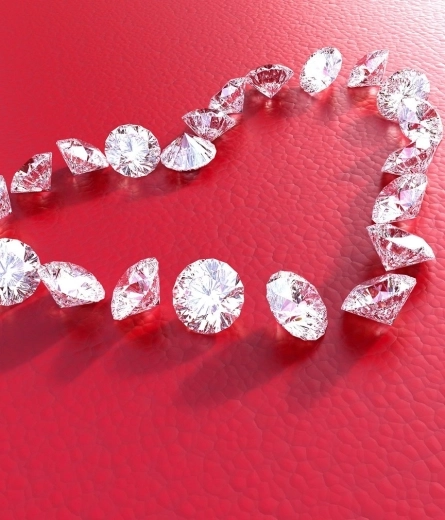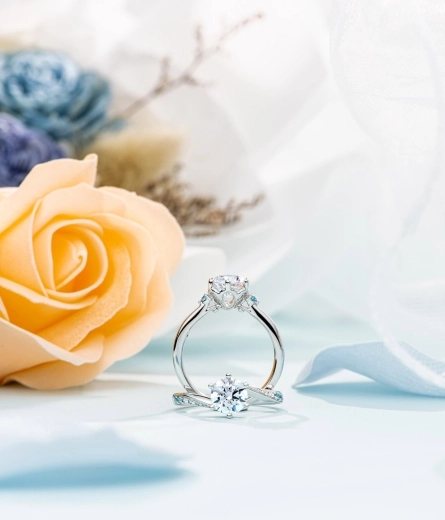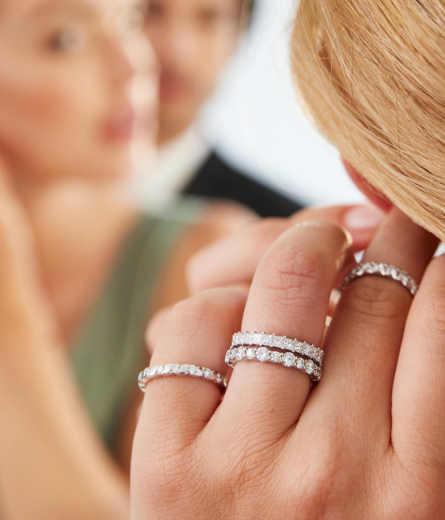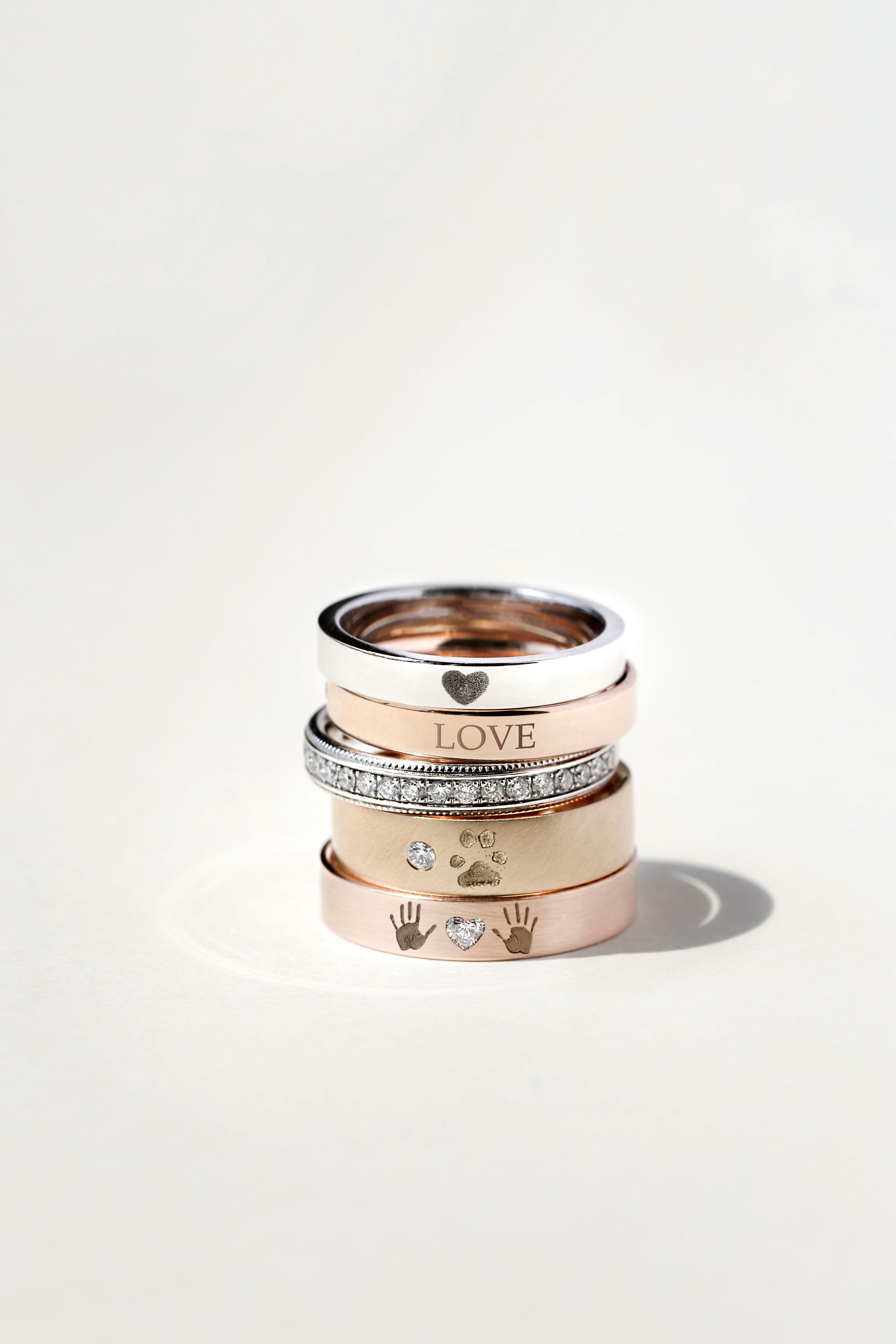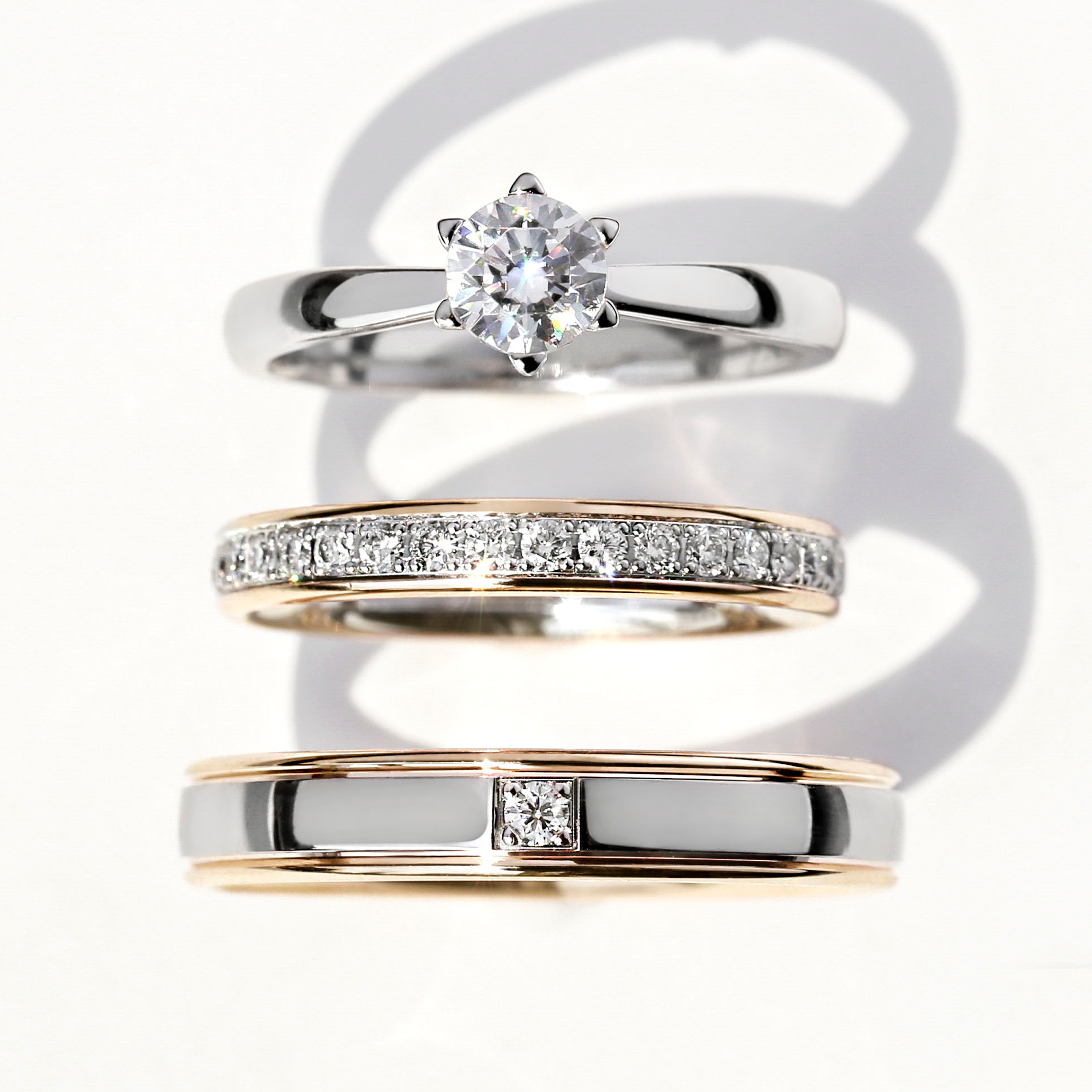How are diamond grades determined? Check out the 4Cs of Diamonds to determine

Diamond 4C Evaluation Criteria
Previously, ALUXE introduced GIA diamonds and GIA International Diamond Grading Reports, briefly mentioning that the 4Cs of diamonds are crucial factors influencing diamond grades. However, what are the evaluation criteria for these four factors? Let ALUXE clarify and explain them for you.
Diamond "COLOR" Grade
The color of a diamond is a significant factor in determining its value, with diamonds closer to transparent and colorless being more valuable. According to GIA's grading standards, diamonds are classified into different grades from D to Z based on their color after comparison with reference stones.
Transparent and colorless:D、E、F
Near colorless:G、H、I、J
Slightly yellow:K、L、M
Light yellow:N、O、P、Q、R
Yellow:S、T、U、V、W、X、Y、Z
As shown, diamonds below the J grade exhibit noticeable yellow tint. However, what constitutes "slightly yellow"? Unfortunately, we cannot show examples for you to see at ALUXE stores because ALUXE only provides top-quality GIA diamonds of J grade or above, near colorless or colorless.
Diamond "CLARITY" Grade
Because diamond inclusions can affect light refraction, blocking or distorting light, clarity is an essential feature in diamond evaluation. Common types of inclusions include clouds, feathers, included crystals, and needles. Diamond clarity can be categorized into 11 grades, divided into those that are not visible to the naked eye and those that are visible.

Not visible to the eye:
FL:Flawless
IF:Internally flawless
VVS1/VVS2:Very, very slightly included
VS1/VS2:Very slightly included
SI1:Slightly included
SI2:Moderately included
Visible to the eye:
I1:Included
I2:Very noticeable inclusions that are easily visible to the eye and may affect the durability of the diamond
I3: Highly noticeable inclusions that are clearly visible to the eye and severely impact the durability of the diamond
Diamond “CARAT” Grade
Diamond “CUT” Grade
Diamond cut grades can be divided into five levels:
EX: Excellent - Perfectly reflects all incoming light rays into the diamond, extremely rare and perfect diamonds.
VG: Very Good - Reflects fire and brilliance similar to ideal cut.
G: Good - Reflects most of the light and fire into the diamond.
F: Fair - Acceptable level of diamond.
P: Poor - Diamonds that do not meet the standard for fair cut.
ALUXE not only does not provide diamonds below the good (G) cut grade but also offers exclusive ALUXE Perfect Cut (PF) diamonds, which account for 1% of diamonds on the market, making them the rarest and most perfect diamonds available.
Diamond Polish
In the GIA grading system, diamond polish is categorized as follows:
- Excellent: No visible polish flaws under 10x magnification.
- Very Good: Polish flaws are very difficult to perceive under 10x magnification.
- Good: Polish flaws are somewhat difficult to perceive under 10x magnification.
- Fair: Polish flaws are noticeable under 10x magnification.
- Poor: Polish flaws are very noticeable under 10x magnification.
During the polishing process, tiny surface imperfections may arise, such as tiny crystal fragments produced by the polishing wheel's drag. These flaws affect the smoothness of the diamond's surface, thereby affecting its ability to reflect light. Therefore, polish is one of the important factors in assessing the overall finish of a diamond.
Diamond symmetry is a crucial factor in evaluating cutting quality, referring to the precise arrangement and intersection of each facet of the diamond. Symmetry affects how the diamond interacts with light, thereby influencing its brilliance and fire. Major gemological laboratories like GIA typically grade symmetry from "Poor" to "Excellent." For diamonds seeking optimal brilliance and fire, it is recommended to look for "Very Good" or "Excellent" symmetry grades. Diamonds with higher symmetry grades usually command higher prices due to the higher level of craftsmanship required.
Diamond fluorescence refers to the visible light emitted by a diamond when exposed to invisible ultraviolet (UV) light.
In GIA diamond grading reports, fluorescence refers to the strength or intensity of a diamond's reaction to long-wave UV light, which is a significant component of daylight.
The duration of fluorescence is the same as the time the diamond is exposed to UV light sources.






































